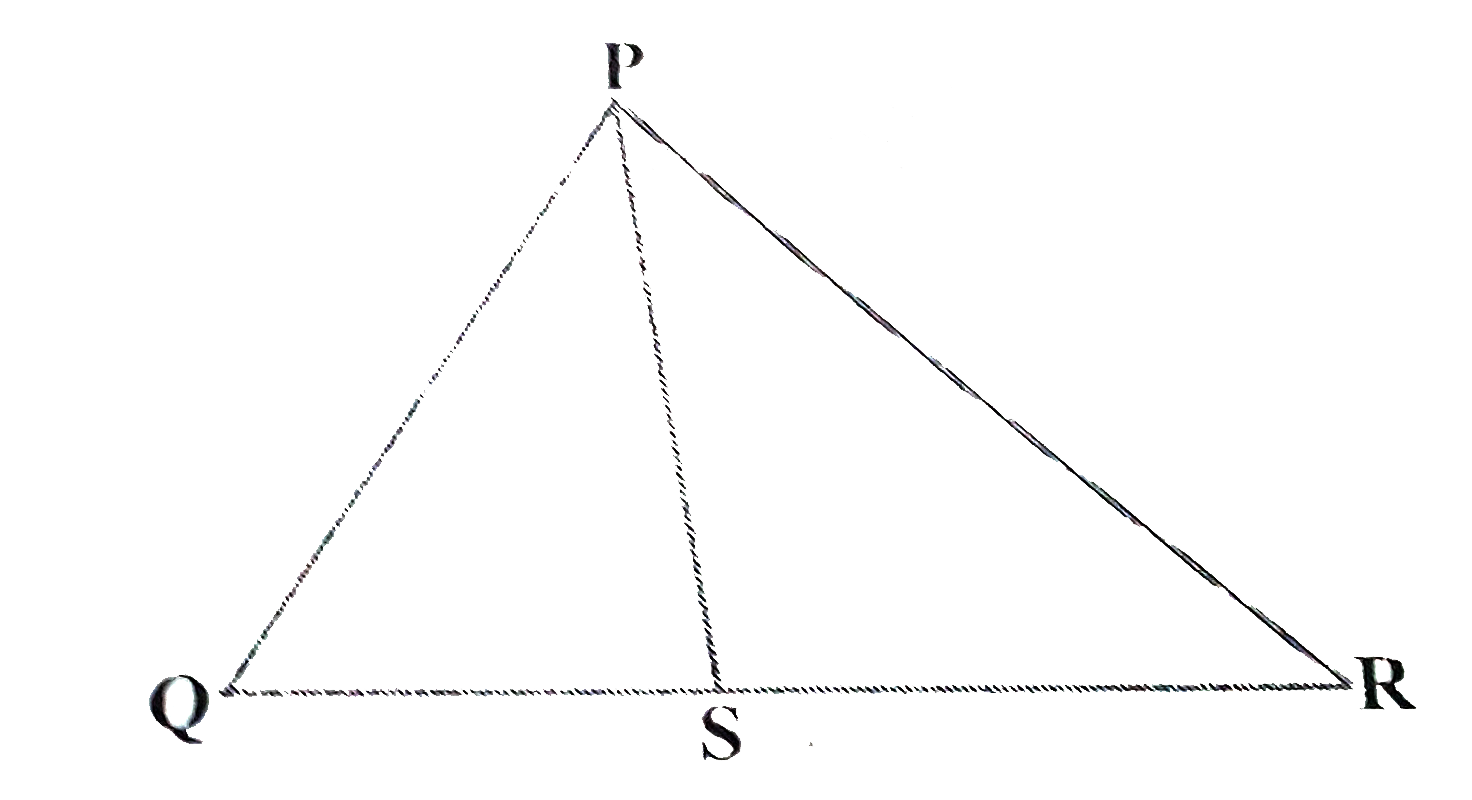In Figure, l∣∣m Name three pairs of similar triangles with proper correspondence; write similarties. Prove that ABPQ=ACPR=BCRQ
To solve the problem, we will follow these steps:
Step 1: Identify the pairs of similar triangles
We need to identify three pairs of similar triangles based on the given information that lines l and m are parallel.
1. First Pair: Triangle ABK and Triangle PQK
- Correspondence: △ABK∼△PQK
- Reason: ∠BAK=∠QPK (alternate angles) and ∠AKB=∠PKQ (vertically opposite angles).
2. Second Pair: Triangle CBK and Triangle RQK
- Correspondence: △CBK∼△RQK
- Reason: ∠BCK=∠QRK (alternate angles) and ∠BKC=∠QKR (vertically opposite angles).
3. Third Pair: Triangle ACK and Triangle PRK
- Correspondence: △ACK∼△PRK
- Reason: ∠ACK=∠PRK (alternate angles) and ∠AKC=∠PKR (vertically opposite angles).
Step 2: Write the similarity ratios
From the similarity of the triangles, we can write the following ratios:
1. From △ABK∼△PQK:
ABPQ=AKPK=BKQK
2. From △CBK∼△RQK:
CBRQ=CKRK=BKQK
3. From △ACK∼△PRK:
ACPR=AKPK=CKRK
Step 3: Establish the relationships
Now we can establish relationships between the ratios:
- From the first and second pairs:
ABPQ=BKQKandCBRQ=BKQK
Therefore, we can equate:
ABPQ=CBRQ(let's call this Equation 1)
- From the first and third pairs:
ABPQ=AKPKandACPR=AKPK
Therefore, we can equate:
ABPQ=ACPR(let's call this Equation 2)
- From the second and third pairs:
CBRQ=CKRKandACPR=CKRK
Therefore, we can equate:
CBRQ=ACPR(let's call this Equation 3)
Step 4: Combine the results
From Equations 1, 2, and 3, we have:
ABPQ=ACPR=CBRQ
Thus, we have proved that:
ABPQ=ACPR=BCRQ
We need to identify three pairs of similar triangles based on the given information that lines l and m are parallel.
- Correspondence: △ABK∼△PQK
- Reason: ∠BAK=∠QPK (alternate angles) and ∠AKB=∠PKQ (vertically opposite angles).
- Correspondence: △CBK∼△RQK
- Reason: ∠BCK=∠QRK (alternate angles) and ∠BKC=∠QKR (vertically opposite angles).
- Correspondence: △ACK∼△PRK
- Reason: ∠ACK=∠PRK (alternate angles) and ∠AKC=∠PKR (vertically opposite angles).
From the similarity of the triangles, we can write the following ratios:
ABPQ=AKPK=BKQK
CBRQ=CKRK=BKQK
ACPR=AKPK=CKRK
Now we can establish relationships between the ratios:
ABPQ=BKQKandCBRQ=BKQK
Therefore, we can equate:
ABPQ=CBRQ(let's call this Equation 1)
ABPQ=AKPKandACPR=AKPK
Therefore, we can equate:
ABPQ=ACPR(let's call this Equation 2)
CBRQ=CKRKandACPR=CKRK
Therefore, we can equate:
CBRQ=ACPR(let's call this Equation 3)
From Equations 1, 2, and 3, we have:
ABPQ=ACPR=CBRQ
ABPQ=ACPR=BCRQ
Topper's Solved these Questions
Similar Questions
In figure PS is the bisector of ∠QPRof ΔPQR. Prove that QSSR=PQPR.

View SolutionIn Figure PQ∣∣CD and PR∣∣CB.ProveAQQD=ARRB.
View SolutionThe sums of first p, q, r terms of an A.P. are a, b, c respectively. Prove that
ap(q−r)+bq(r−p)+cr(p−q)=0
View SolutionSum of the first p, q and r terms of an A.P are a, b and c, respectively.Prove that ap(q−r)+bq(r−p)+cr(p−q)=0
View SolutionSum of the first p, q and r terms of an A.P are a, b and c, respectively.Prove that ap(q−r)+bq(r−p)+cr(p−q)=0
View SolutionIf the areas of two similar triangles ABC and PQR are in the ratio 9:16 and BC=4.5cm , what is the length of QR ?
View SolutionThe perimeters of two similar triangles ABC and PQR are respectively 36cm and 24cm. If PQ=10cm , find AB .
View SolutionIn Fig. if PQ∣∣BC and PR∣∣CD . Prove that (i) ARAD=AQAB (ii) QBAQ=DRAR .
View SolutionIn Figure, AP||BQ ||CR. Prove that ar (AQC)= ar (PBR)
View SolutionWithout drawing the triangles, state the correspondence between the sides and the angles of the following pairs of congruent triangles: (a) ABC≅PQR (b) ABC≅QRP
View Solution
